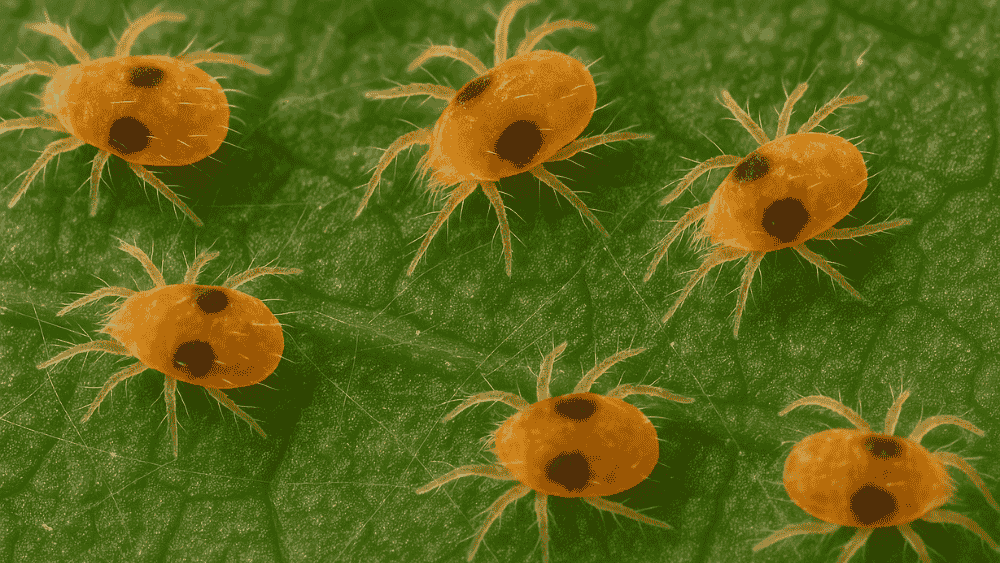
How to Control Two-Spotted Mites in Tomato Plants Organically
Share
Tiny but destructive, mites in tomato plants can wreak havoc in your flourishing fields and destroy your healthy produce in just a matter of days.
If you have noticed yellow-speckled leaves, webbing, or overall plant stress, you might be dealing with a notorious pest: the two-spotted spider mite. These pests may seem small, but ignoring them can lead to devastating results, especially during hot and dry growing seasons when infestations tend to spike.
Thus, learning how to identify, prevent, and treat mites early is crucial.
With increasing awareness of chemical-free agricultural practices, more farmers and home growers are turning to organic solutions for healthier plants and ecosystems.
Organic two-spotted spider mite control is not just effective—it is more reliable, sustainable, and safer for both your plants and the environment.
So whether you’re growing tomatoes in a field or managing a backyard greenhouse, this guide will walk you through everything you need to know about identifying, managing, and treating two-spotted spider mites the organic way.
What are Two-Spotted Spider Mites?
Two-spotted spider mites (Tetranychus urticae) are sap-sucking pests that thrive in warm, dry conditions. Measuring less than 1 mm, they are almost invisible to the naked eye, but their damage is unmistakable. These pests feed on the chlorophyll in plants, leaving behind stippled, yellowing leaves that may eventually dry and fall off.
Often mistaken for dust or specks of dirt, these mites on tomato leaves are most easily identified by the fine silk webs they produce and their characteristic two dark spots on their back. Red spider mites on plants, which are often adult forms of the two-spotted species, increase the potential damage and make it difficult to identify.
Identifying Two-Spotted Spider Mites in Tomato Plants
Effective two spotted spider mite control begins with early detection and correct identification of these irritating pests. Although mites are not easily visible to the naked eye, they leave behind a bunch of signs and symptoms on plants that can help you identify them correctly before implementing any control method.
Here’s what you should look for in your tomato plants to identify two-spotted spider mite infestation:
Yellow or White Specks on Leaves
Two-spotted spider mites on tomato leaves create a characteristic pattern of yellow or white spots, which are formed when they feed on the chlorophyll. These spots cover the entire upper surface of leaves, giving a clear indication of mite infestation.
Fine Webbing
Mites in tomato plants spin fine, silky webs similar to spider webs, and the presence of these webs on a plant is an indicator of a spider mite infestation. These webbings might be confused with spider webs; thus, clear identification is important.
Dusty, Gritty Feeling Leaves
Red mites on tomato plants leave behind a range of debris on leaves, such as fecal matter, fine webbing, dead mites, and the cast-off exoskeletons, which build up on the underside of some leaves, making the leaf feel gritty to the touch.
Premature Leaf Drop
In case of severe spider mite infestation, plants begin to shed young leaves. This is because mites consume the chlorophyll in leaves, which is essential for plants to produce energy. You will notice increased leaf drop and slow growth of new ones.
Brown or Dull Foliage
When spider mites infest mature and healthy tomato plants, the foliage, stems, and twigs of the plants lose their colour and look more brownish or yellowish. This indicates that the infestation is severe, and effective mite treatment is needed.
Effective Organic Methods for Two Spotted Spider Mite Control
When it comes to controlling two-spotted spider mites in tomato plants, Chemical pesticides might offer quick relief, but they also bring numerous side effects. On the other hand, Organic methods offer more effective options as they are safer for consumption and maintain the long-term health of your plants and fields.
Let’s now explore tried-and-true organic methods for two spotted spider mite control;
Organic Miticides
Organic miticides are undoubtedly the most effective and efficient treatment for two-spotted spider mites. These pesticides are completely chemical-free and are safe for plants and the environment. Prefer to shop from trusted brands to get miticides that get rid of spider mites quickly, while promoting plant growth.
Physical Removal
For light infestations, a simple blast of water can be surprisingly effective. Use a strong stream from a hose to dislodge mites on leaves, especially from the undersides. Prune and discard heavily infested leaves and stems, or entire plant if needed. Never compost these, as you may inadvertently allow the mites to return.
Beneficial Predators
Certain species of insects and bugs feed on spider mites, but are completely harmless to your plants. Introducing such insects, like lacewings and ladybugs, in your fields intentionally can drastically reduce red mites on tomato plants. These beneficial predators help you control spider mite infestation naturally.
Neem Oil Spray
Neem oil is a well-known organic pesticide that disrupts the life cycle of spider mites. It suffocates them and reduces egg-laying. Mix neem oil with a mild soap and water, then spray generously under and over the leaves. Reapply every 5 to 7 days for ongoing infestation and prolonged protection for young plants.
Homemade Insecticidal Soap
Insecticidal soap is another gentle yet effective organic mite treatment. You can either purchase ready-made organic sprays or make one at home by combining liquid castile soap, water, and essential oils. This treatment breaks down the protective coating of the mites on tomato leaves, causing dehydration and death.
Companion Planting
Strategically placing companion plants that repel spider mites can work wonders. Herbs and flowers like Garlic, Chives, Marigold, and Basil can deter mites in plant leaves while also attracting beneficial predators. This passive, preventive strategy keeps your primary plants safe while promoting eco-friendly farming practices.
Diatomaceous Earth
Diatomaceous earth is a powdery substance made from fossilized algae. It damages the exoskeleton of mites on tomato leaves, causing them to dehydrate and die. Sprinkle a thin layer on the soil and leaves, focusing on the underside where mites often hide. Make sure to use food-grade diatomaceous earth for tomato plants.
Crop Rotation
Crop rotation is a common agricultural practice where different varieties of crops are planted in a field over different planting seasons. This maintains soil health and prevents pests from infecting crops continuously. For tomato plants, avoid crops like peppers, eggplants, and potatoes in rotation, as they share similar pests.
Controlling Two-Spotted Mite Infestation with Octa Organics
Controlling mites in tomato plants organically requires a bit of diligence, but the rewards are healthier plants, chemical-free produce, and a thriving garden ecosystem. From simple water sprays to sophisticated organic predator strategies, nature offers us plenty of solutions if we pay attention.
Instead of resorting to synthetic chemicals, leverage the power of organic, environment-friendly methods for mite control with Octa Organics. We offer 100% natural products that promote sustainable farming and help you enjoy lush, vibrant tomato plants season after season, while keeping them mite-free.

